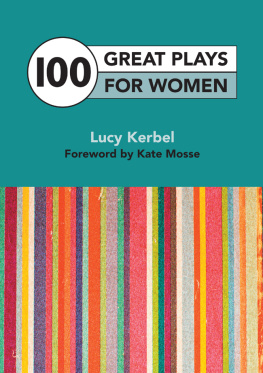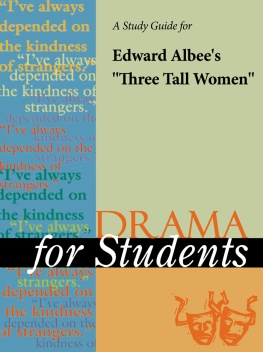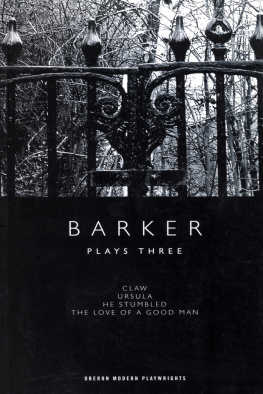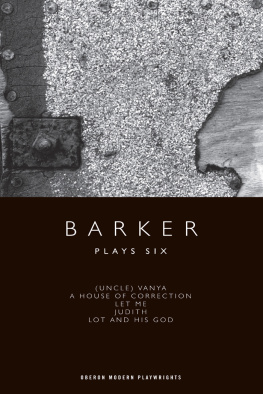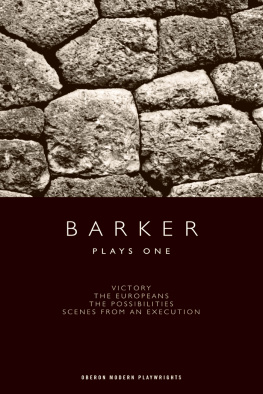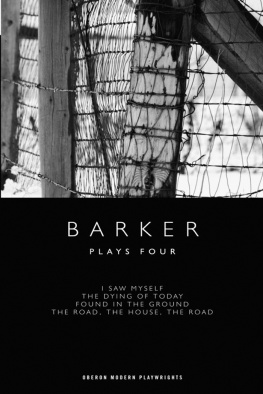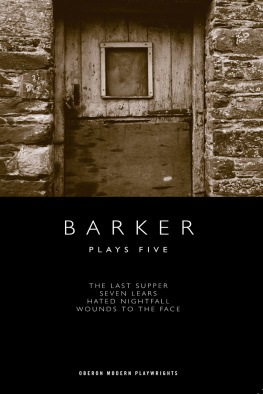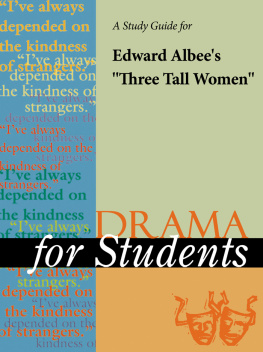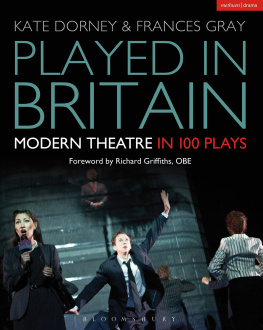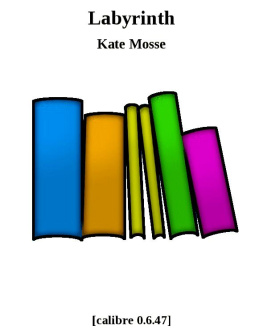Lucy Kerbel

Foreword by Kate Mosse

NICK HERN BOOKS
London
www.nickhernbooks.co.uk
Contents
Foreword
Kate Mosse
When I was six, my parents took me to see a production of Labiches The Italian Straw Hat at Chichester Festival Theatre. It was 1967 and people dressed up to go to the theatre then. A blue party dress and black patent shoes, small hands in large, walking up from the foyer into the auditorium. A shiver when the lights went down and a dazzling realisation that, in this place in the theatre anything was possible. That it was a magical world, both commonplace and utterly transformed.
Even now, I have that shiver of anticipation when the house lights dim and still feel there are few places in the world more exhilarating, transformative, significant than a theatre. Its somewhere we are entertained, of course, but also where we are challenged, moved. A place of revolution and substance, where emotions and ideas that matter faith, loss, remorse, pity, fear, hate, doubt, hope, love are laid bare. A place where orthodoxies and inequalities are confronted. A place where the best and the worst of ourselves our Society is reflected back at us.
But what is being reflected? Should art reflect reality or strive to change things or both? Was every corner of Society there, every shape and size, or just a small part of it? For Lucy Kerbel, a director and founder of Tonic Theatre it was puzzling and why she decided to write this book. I could be pretty sure that nine times out of ten, she writes, the women on stage would be outnumbered by the men the ratio of male to female roles didnt seem to alter regardless of whether I was watching Shakespeare or new writing.
Supported by the National Theatre Studio, Kerbel realised although the theatre industry was increasingly focusing on the question of gender imbalance and deciding what could be done about it many writers, directors and actors such as Janet Suzman in her 2012 book Not Hamlet, or novelist Stella Duffy were frustrated by the situation: When we do not see ourselves on stage, Duffy wrote in a blog earlier this year, we are reminded, yet again, that the people running our world (count the women on the Front Benches if you are at all unsure) do not notice when we are not there. That they think men (and yes, white, middle-class, middle-aged, able-bodied men at that) are all we need to see.
I cant imagine theres a single artistic director who consciously thinks that. But, at the same time, when programming plays one admires or work destined to carry the burden of the box office Kerbel, as she explains in her Introduction, realised how easy it was for directors simply to fail to notice how the repertoire favoured men with more stage time, more varied roles, more lines. Or to notice, but decide it wasnt a priority. As Elizabeth Freestone of Pentabus observed in 2012: The theatre world remains strangely passive in the face of overwhelming evidence of its failure to address the gender imbalance both on and off stage. Programming, commissioning and casting decisions are routinely made without any consideration of gender.
One of the ways inspirational directors and artistic directors do address the imbalance (particularly within the classic core canon) is through gender-blind casting and its becoming more and more popular. From Fiona Shaws Richard II in 1995 and Kathryn Hunters Lear two years later to Phyllida Lloyds dazzling all-female Julius Caesar at the Donmar Warehouse in 2012, this is a sign of the determination both to confront the issue head on and accelerate change. To enrich the experience of women and men on and off the stage, to refresh and extend the work. For 2014, the Manchester Royal Exchange has already announced a female Hamlet more than a hundred years after Sarah Bernhardt first played the Danish Prince in 1899. Gender- (and colour-) blind casting is a significant creative decision too, though, not merely about the numbers. There are exciting artistic benefits. When imaginative, radical casting decisions are taken, a text often changes, reveals its true self, shifts, slides, transforms. It can throw the spotlight back onto the words, to the intention of the writer, or reveals a previously hidden beauty or purpose.
Even so, Kerbel realised the idea that gender-blind casting is necessary in part, at least, because of a lack of good, performable, plays for women informed the discussion. But, she wondered, had anyone actually checked?
She set off with notebook and pen to see what was out there. The result? This gem of a book a selection of 100 great plays with majority female casts, as well as ten monologues for solo performers. Here are stories of war and faith, politics, science, history, our attempts to conjoin our emotions with those of women and men living centuries ago, and plays that show us how we live now. The earliest plays date back to the fifth and fourth centuries BCE, the most recent where the ink is barely dry. Some could be termed as feminist insofar as their purpose is political, as well as cultural where others are meditations on womens and mens lives. It doesnt matter whether the author is female or male, only that a broad and full range of female experience is represented. In other words, that the drama reflects life in all its colours and hues and shapes.
Leading artistic directors not least of all Vicky Featherstone at the Royal Court and Josie Rourke at the Donmar Warehouse, amongst others have already had an enormous impact and, through choice of work and casting, transformed the look of some of our stages. But here Lucy Kerbel has done hard-working directors and artistic directors, of spaces large and small, a great service. By gathering together so many vibrant and varied pieces of theatre, shes provided evidence to refute the time-worn excuse that there arent any great plays for women. Its up to everyone, now, to seek out these plays, to read them or programme them. So when the lights go down in the auditorium, we can choose not to notice a disproportionate lack of women. Or we can notice and decide it doesnt matter. But, thanks to this book, we cant any longer pretend that there arent at least one hundred great plays for women.
Kate Mosse is the author of six novels, a collection of short stories, three plays and four works of non-fiction, including The House: Behind the Scenes at the Royal Opera House and Chichester Festival Theatre at Fifty. She is currently working on a major history play.
Introduction
There just arent any good plays for women
is a phrase I got used to hearing. I heard it a lot from my colleagues in theatre when I began to ask, quietly and a little nervously at first why dont we see more women on stage? Id had a growing realisation that when I watched a play (which, given my job as a theatre director, was at least once a week, generally more), I could be pretty sure that nine times out of ten, the women on stage would be outnumbered by the men. I noticed that this was the case in older plays, plays written in periods in history when womens lives werent considered interesting or complex enough to hold the attention of an audience; but I also noticed it in new plays, plays written now, in a time when women apparently play a more equal role in our society. The ratio of male to female roles didnt seem to alter regardless of whether I was watching Shakespeare or new writing.
I noticed that when women did make it on stage, they tended to be of a narrower age bracket and physical type than their male counterparts. And crucially, that when they were on stage, they were less likely to be at the heart of the action. Instead, they seemed often to be at the periphery of what was going on; they played the mothers, wives, love interests and daughters of protagonists, but were rarely protagonists themselves. Yes, there were the exceptions the Electras, Mother Courages and Saint Joans. But generally the women in these plays were on their own on stage, surrounded by a sea of men. Regularly too, what seemed to be defining them was their very femaleness their predicament as lone women struggling through a mans world. It was almost as if being a

